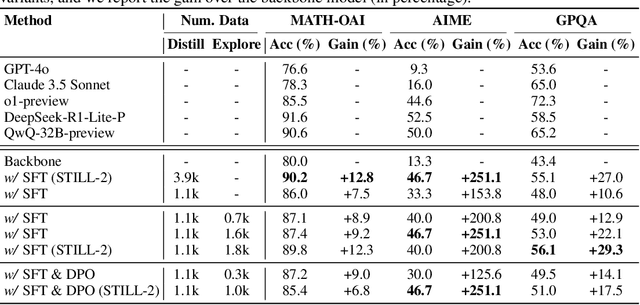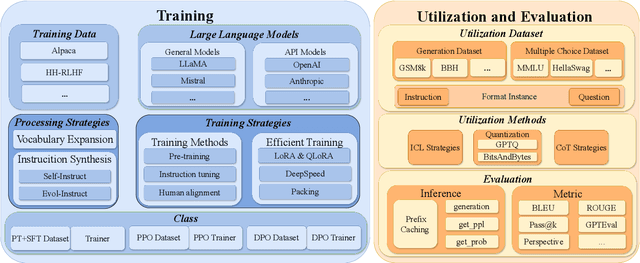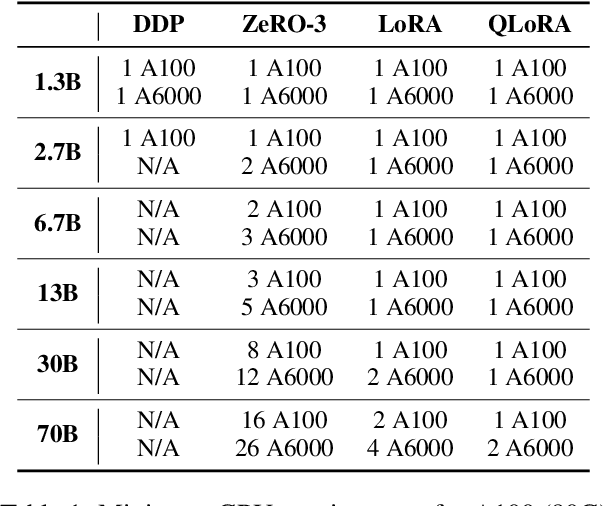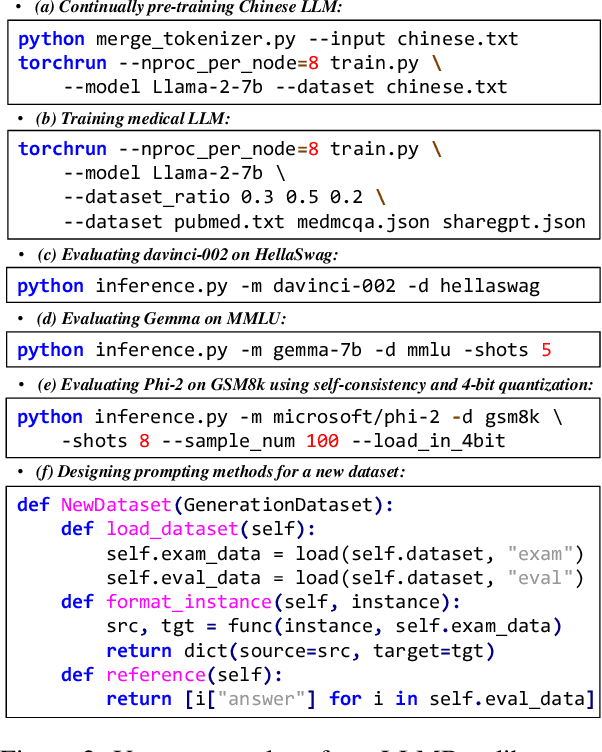Yiwen Hu
MARIO: A Mixed Annotation Framework For Polyp Segmentation
Jan 19, 2025Abstract:Existing polyp segmentation models are limited by high labeling costs and the small size of datasets. Additionally, vast polyp datasets remain underutilized because these models typically rely on a single type of annotation. To address this dilemma, we introduce MARIO, a mixed supervision model designed to accommodate various annotation types, significantly expanding the range of usable data. MARIO learns from underutilized datasets by incorporating five forms of supervision: pixel-level, box-level, polygon-level, scribblelevel, and point-level. Each form of supervision is associated with a tailored loss that effectively leverages the supervision labels while minimizing the noise. This allows MARIO to move beyond the constraints of relying on a single annotation type. Furthermore, MARIO primarily utilizes dataset with weak and cheap annotations, reducing the dependence on large-scale, fully annotated ones. Experimental results across five benchmark datasets demonstrate that MARIO consistently outperforms existing methods, highlighting its efficacy in balancing trade-offs between different forms of supervision and maximizing polyp segmentation performance
YuLan-Mini: An Open Data-efficient Language Model
Dec 24, 2024



Abstract:Effective pre-training of large language models (LLMs) has been challenging due to the immense resource demands and the complexity of the technical processes involved. This paper presents a detailed technical report on YuLan-Mini, a highly capable base model with 2.42B parameters that achieves top-tier performance among models of similar parameter scale. Our pre-training approach focuses on enhancing training efficacy through three key technical contributions: an elaborate data pipeline combines data cleaning with data schedule strategies, a robust optimization method to mitigate training instability, and an effective annealing approach that incorporates targeted data selection and long context training. Remarkably, YuLan-Mini, trained on 1.08T tokens, achieves performance comparable to industry-leading models that require significantly more data. To facilitate reproduction, we release the full details of the data composition for each training phase. Project details can be accessed at the following link: https://github.com/RUC-GSAI/YuLan-Mini.
Imitate, Explore, and Self-Improve: A Reproduction Report on Slow-thinking Reasoning Systems
Dec 12, 2024



Abstract:Recently, slow-thinking reasoning systems, such as o1, have demonstrated remarkable capabilities in solving complex reasoning tasks. These systems typically engage in an extended thinking process before responding to a query, allowing them to generate more thorough, accurate, and well-reasoned solutions. These systems are primarily developed and maintained by industry, with their core techniques not publicly disclosed. In response, an increasing number of studies from the research community aim to explore the technical foundations underlying these powerful reasoning systems. Building on these prior efforts, this paper presents a reproduction report on implementing o1-like reasoning systems. We introduce an "imitate, explore, and self-improve" framework as our primary technical approach to train the reasoning model. In the initial phase, we use distilled long-form thought data to fine-tune the reasoning model, enabling it to invoke a slow-thinking mode. The model is then encouraged to explore challenging problems by generating multiple rollouts, which can result in increasingly more high-quality trajectories that lead to correct answers. Furthermore, the model undergoes self-improvement by iteratively refining its training dataset. To verify the effectiveness of this approach, we conduct extensive experiments on three challenging benchmarks. The experimental results demonstrate that our approach achieves competitive performance compared to industry-level reasoning systems on these benchmarks.
Privacy-Preserving Federated Foundation Model for Generalist Ultrasound Artificial Intelligence
Nov 25, 2024



Abstract:Ultrasound imaging is widely used in clinical diagnosis due to its non-invasive nature and real-time capabilities. However, conventional ultrasound diagnostics face several limitations, including high dependence on physician expertise and suboptimal image quality, which complicates interpretation and increases the likelihood of diagnostic errors. Artificial intelligence (AI) has emerged as a promising solution to enhance clinical diagnosis, particularly in detecting abnormalities across various biomedical imaging modalities. Nonetheless, current AI models for ultrasound imaging face critical challenges. First, these models often require large volumes of labeled medical data, raising concerns over patient privacy breaches. Second, most existing models are task-specific, which restricts their broader clinical utility. To overcome these challenges, we present UltraFedFM, an innovative privacy-preserving ultrasound foundation model. UltraFedFM is collaboratively pre-trained using federated learning across 16 distributed medical institutions in 9 countries, leveraging a dataset of over 1 million ultrasound images covering 19 organs and 10 ultrasound modalities. This extensive and diverse data, combined with a secure training framework, enables UltraFedFM to exhibit strong generalization and diagnostic capabilities. It achieves an average area under the receiver operating characteristic curve of 0.927 for disease diagnosis and a dice similarity coefficient of 0.878 for lesion segmentation. Notably, UltraFedFM surpasses the diagnostic accuracy of mid-level ultrasonographers and matches the performance of expert-level sonographers in the joint diagnosis of 8 common systemic diseases. These findings indicate that UltraFedFM can significantly enhance clinical diagnostics while safeguarding patient privacy, marking an advancement in AI-driven ultrasound imaging for future clinical applications.
MixPolyp: Integrating Mask, Box and Scribble Supervision for Enhanced Polyp Segmentation
Sep 25, 2024



Abstract:Limited by the expensive labeling, polyp segmentation models are plagued by data shortages. To tackle this, we propose the mixed supervised polyp segmentation paradigm (MixPolyp). Unlike traditional models relying on a single type of annotation, MixPolyp combines diverse annotation types (mask, box, and scribble) within a single model, thereby expanding the range of available data and reducing labeling costs. To achieve this, MixPolyp introduces three novel supervision losses to handle various annotations: Subspace Projection loss (L_SP), Binary Minimum Entropy loss (L_BME), and Linear Regularization loss (L_LR). For box annotations, L_SP eliminates shape inconsistencies between the prediction and the supervision. For scribble annotations, L_BME provides supervision for unlabeled pixels through minimum entropy constraint, thereby alleviating supervision sparsity. Furthermore, L_LR provides dense supervision by enforcing consistency among the predictions, thus reducing the non-uniqueness. These losses are independent of the model structure, making them generally applicable. They are used only during training, adding no computational cost during inference. Extensive experiments on five datasets demonstrate MixPolyp's effectiveness.
Towards a Benchmark for Colorectal Cancer Segmentation in Endorectal Ultrasound Videos: Dataset and Model Development
Aug 19, 2024Abstract:Endorectal ultrasound (ERUS) is an important imaging modality that provides high reliability for diagnosing the depth and boundary of invasion in colorectal cancer. However, the lack of a large-scale ERUS dataset with high-quality annotations hinders the development of automatic ultrasound diagnostics. In this paper, we collected and annotated the first benchmark dataset that covers diverse ERUS scenarios, i.e. colorectal cancer segmentation, detection, and infiltration depth staging. Our ERUS-10K dataset comprises 77 videos and 10,000 high-resolution annotated frames. Based on this dataset, we further introduce a benchmark model for colorectal cancer segmentation, named the Adaptive Sparse-context TRansformer (ASTR). ASTR is designed based on three considerations: scanning mode discrepancy, temporal information, and low computational complexity. For generalizing to different scanning modes, the adaptive scanning-mode augmentation is proposed to convert between raw sector images and linear scan ones. For mining temporal information, the sparse-context transformer is incorporated to integrate inter-frame local and global features. For reducing computational complexity, the sparse-context block is introduced to extract contextual features from auxiliary frames. Finally, on the benchmark dataset, the proposed ASTR model achieves a 77.6% Dice score in rectal cancer segmentation, largely outperforming previous state-of-the-art methods.
LLMBox: A Comprehensive Library for Large Language Models
Jul 08, 2024



Abstract:To facilitate the research on large language models (LLMs), this paper presents a comprehensive and unified library, LLMBox, to ease the development, use, and evaluation of LLMs. This library is featured with three main merits: (1) a unified data interface that supports the flexible implementation of various training strategies, (2) a comprehensive evaluation that covers extensive tasks, datasets, and models, and (3) more practical consideration, especially on user-friendliness and efficiency. With our library, users can easily reproduce existing methods, train new models, and conduct comprehensive performance comparisons. To rigorously test LLMBox, we conduct extensive experiments in a diverse coverage of evaluation settings, and experimental results demonstrate the effectiveness and efficiency of our library in supporting various implementations related to LLMs. The detailed introduction and usage guidance can be found at https://github.com/RUCAIBox/LLMBox.
ECC-PolypDet: Enhanced CenterNet with Contrastive Learning for Automatic Polyp Detection
Jan 10, 2024



Abstract:Accurate polyp detection is critical for early colorectal cancer diagnosis. Although remarkable progress has been achieved in recent years, the complex colon environment and concealed polyps with unclear boundaries still pose severe challenges in this area. Existing methods either involve computationally expensive context aggregation or lack prior modeling of polyps, resulting in poor performance in challenging cases. In this paper, we propose the Enhanced CenterNet with Contrastive Learning (ECC-PolypDet), a two-stage training \& end-to-end inference framework that leverages images and bounding box annotations to train a general model and fine-tune it based on the inference score to obtain a final robust model. Specifically, we conduct Box-assisted Contrastive Learning (BCL) during training to minimize the intra-class difference and maximize the inter-class difference between foreground polyps and backgrounds, enabling our model to capture concealed polyps. Moreover, to enhance the recognition of small polyps, we design the Semantic Flow-guided Feature Pyramid Network (SFFPN) to aggregate multi-scale features and the Heatmap Propagation (HP) module to boost the model's attention on polyp targets. In the fine-tuning stage, we introduce the IoU-guided Sample Re-weighting (ISR) mechanism to prioritize hard samples by adaptively adjusting the loss weight for each sample during fine-tuning. Extensive experiments on six large-scale colonoscopy datasets demonstrate the superiority of our model compared with previous state-of-the-art detectors.
WeakPolyp: You Only Look Bounding Box for Polyp Segmentation
Jul 20, 2023Abstract:Limited by expensive pixel-level labels, polyp segmentation models are plagued by data shortage and suffer from impaired generalization. In contrast, polyp bounding box annotations are much cheaper and more accessible. Thus, to reduce labeling cost, we propose to learn a weakly supervised polyp segmentation model (i.e., WeakPolyp) completely based on bounding box annotations. However, coarse bounding boxes contain too much noise. To avoid interference, we introduce the mask-to-box (M2B) transformation. By supervising the outer box mask of the prediction instead of the prediction itself, M2B greatly mitigates the mismatch between the coarse label and the precise prediction. But, M2B only provides sparse supervision, leading to non-unique predictions. Therefore, we further propose a scale consistency (SC) loss for dense supervision. By explicitly aligning predictions across the same image at different scales, the SC loss largely reduces the variation of predictions. Note that our WeakPolyp is a plug-and-play model, which can be easily ported to other appealing backbones. Besides, the proposed modules are only used during training, bringing no computation cost to inference. Extensive experiments demonstrate the effectiveness of our proposed WeakPolyp, which surprisingly achieves a comparable performance with a fully supervised model, requiring no mask annotations at all.
TextBox 2.0: A Text Generation Library with Pre-trained Language Models
Dec 26, 2022Abstract:To facilitate research on text generation, this paper presents a comprehensive and unified library, TextBox 2.0, focusing on the use of pre-trained language models (PLMs). To be comprehensive, our library covers $13$ common text generation tasks and their corresponding $83$ datasets and further incorporates $45$ PLMs covering general, translation, Chinese, dialogue, controllable, distilled, prompting, and lightweight PLMs. We also implement $4$ efficient training strategies and provide $4$ generation objectives for pre-training new PLMs from scratch. To be unified, we design the interfaces to support the entire research pipeline (from data loading to training and evaluation), ensuring that each step can be fulfilled in a unified way. Despite the rich functionality, it is easy to use our library, either through the friendly Python API or command line. To validate the effectiveness of our library, we conduct extensive experiments and exemplify four types of research scenarios. The project is released at the link: https://github.com/RUCAIBox/TextBox.
 Add to Chrome
Add to Chrome Add to Firefox
Add to Firefox Add to Edge
Add to Edge